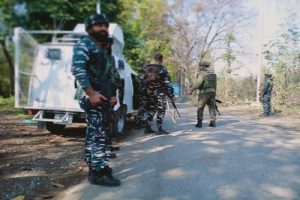In what may seem to be a first of its kind initiative towards avoiding conflicts along the Line of Actual Control (LAC), the Indian Army and the Chinese People’s Liberation Army (PLA) have established a hotline in the North Sikkim region today.
The initiative, it may be noted, coincides with the PLA Day on August 1, 2021, the Indian Army statement pointed out while claiming that the hotline was set up to further the spirit of trust and cordial relations along the borders. Further, it was shared that the hotline was set up between the Indian Army in Kongra La, North Sikkim and PLA at Khamba Dzong in Tibetan Autonomous Region (TAR).
Both India and China are putting up efforts to resolve the conflicts along the LAC through military-level talks. The decision to establish the hotline also comes after the 12th round of talks held at the Chinese side at Moldo. Indian Army, however, felt apart from well-established mechanisms already in place for communication at ground commanders level, such hotlines in various sectors go a long way in maintaining peace and tranquillity at the borders.
The inauguration was attended by ground commanders of the respective armies and a message of friendship and harmony was exchanged through the hotline. Earlier, this year on January 20, Indian and Chinese troops physically clashed in the high-altitude area of Naku La in north Sikkim with several soldiers being injured on both sides after Indian troops thwarted an attempt by PLA to intrude into the Indian territory.
Later, a deadly physical clash at Galwan on June 15, 2020 night claimed 20 Indian lives and four Chinese soldiers. For India, the Sikkim border, including the tri-junction, is extremely critical and sensitive. It is because if a Chinese breakthrough happens here, they can reach, and block, the Siliguri corridor — a narrow, 27-km wide strip that connects India’s entire northeastern region with the rest of the country.
The Chinese control over the Siliguri corridor could cut off the entire northeast. To prevent this, India guards Sikkim heavily with two mountain divisions. The Indian army has safeguarded the Sikkim border.
…With IANS inputs












